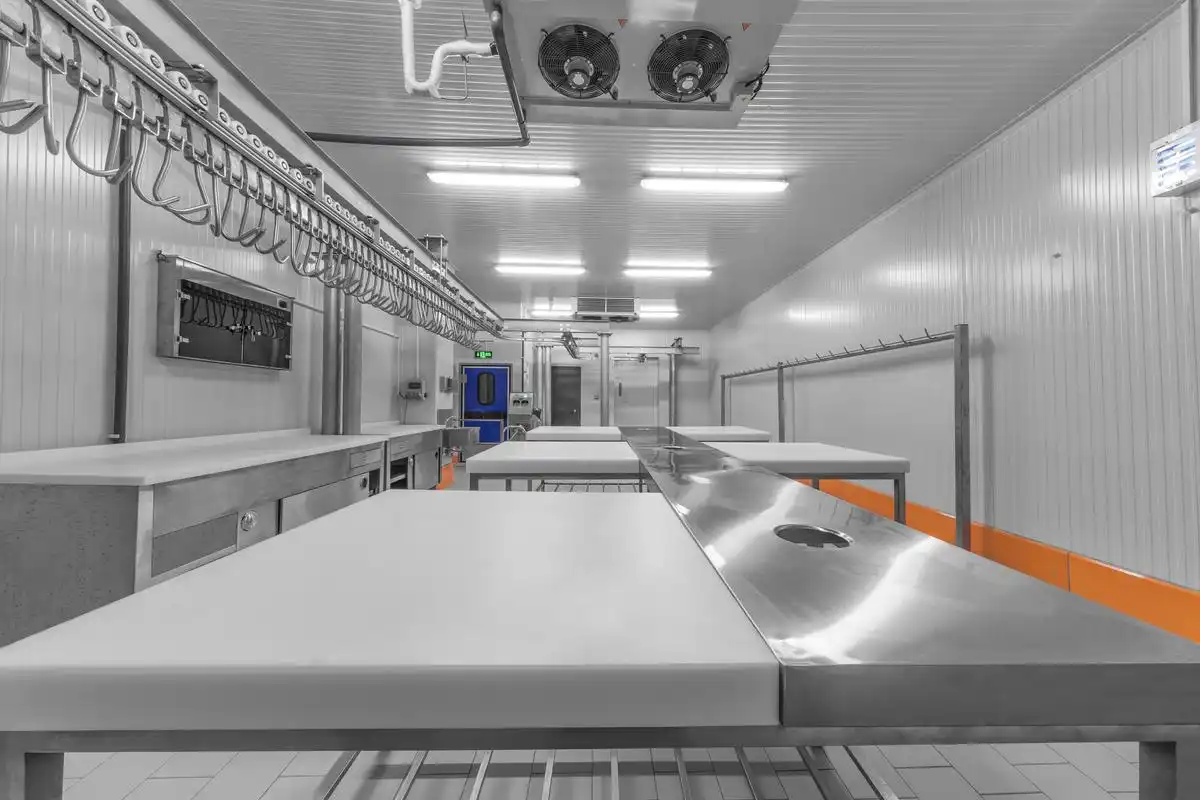Understanding the difference between refrigerated and frozen storage is crucial for industries dealing with perishable goods. Whether you are a manufacturer or distributor, the proper storage of temperature-sensitive products is key to maintaining their quality, safety, and longevity.
Refrigerated and frozen storage serve unique purposes in cold chain logistics, and their applications are dictated by the specific needs of the products being stored. In this article, we will explore the complications of both storage methods, comparing their features, uses, benefits, and challenges, helping you discern which storage type best suits your needs.

Understanding Cold Storage
Cold storage is a broad term that refers to the storing of goods in a temperature-controlled environment. It is a crucial aspect of many industries such as food, pharmaceuticals, and certain types of manufacturing, prolonging the shelf life of perishable items.
It operates on two main types: refrigerated and frozen storage, each catering to different product requirements. These storage methods prevent spoilage and decay while ensuring adherence to laws and regulations, thus maintaining the integrity of the products.
Effectively, the choice between refrigerated and frozen storage hinges on the nature of the items to be stored.
Overview of Refrigerated Storage
Refrigerated storage, as the name suggests, is a temperature-controlled environment typically set between 0 to 10 °C (32 to 50 °F). This type of cold storage is mainly utilized for food items such as dairy products, fresh produce, and beverages that require cool, but not freezing, temperatures to prevent spoilage and maintain freshness.
Refrigerated storage facilities are engineered to maintain consistent temperatures, thus ensuring product quality over time. The regulated temperature slows down bacterial activity significantly, extending the product’s shelf life.
Moreover, some biopharmaceutical products, like certain vaccines and medications, also need refrigerated storage. These products are temperature-sensitive and require stable conditions to maintain their efficacy. Thus, refrigerated storage plays a vital role in the food and pharmaceutical industries by providing an environment conducive to preserving product integrity and quality.
Overview of Frozen Storage
Frozen storage is a specialized type of cold storage facility that stores products at temperatures below 0 degrees F to as low as -30 degrees F. These facilities are integral in industries such as food storage, pharmaceuticals, and chemical storage where certain products must be kept at freezing temperatures to preserve their quality, extend shelf life, and meet regulatory requirements.
Preservation Capabilities
Frozen storage offers long-term preservation capabilities, thanks to the extremely low temperatures that slow down bacterial growth and enzyme activity, two primary factors causing food spoilage. This is why many perishable food items, like meat, seafood, and certain types of fruits and vegetables, are typically stored in frozen warehouses.
Use in the Pharmaceutical Industry
In the pharmaceutical industry, some biologics, vaccines, and other temperature-sensitive drugs require frozen storage to maintain their efficacy. These facilities are often equipped with advanced technologies for real-time temperature monitoring, alarms for temperature deviations, and backup power systems to ensure continuous, uninterrupted freezing conditions.
The design and operation of a frozen storage warehouse, however, present unique challenges due to the extreme cold conditions. Special attention is required for the selection of materials and equipment that can withstand such low temperatures, as well as for the safety and comfort of the workers operating in these environments
Key Differences Between Refrigerated and Frozen Storage
While refrigerated and frozen storage may seem similar at first glance, they serve distinct purposes and have specific operational considerations. Here, we delve into the key differences that distinguish these two types of cold storage facilities
Temperature Range
The main difference between refrigerated and frozen storage is the temperature range. Refrigerated storage typically keeps products at temperatures between 0°C and 10°C, while frozen storage maintains temperatures below 0°C, often as low as -30°C.
Intended Use
Refrigerated storage is designed for short-term preservation and is ideal for perishable goods like dairy products, fresh produce, and medicines. Conversely, frozen storage is intended for long-term preservation and is used for meat, seafood, vaccines, and other items requiring ultra-low temperatures.
Energy Usage and Cost
Operating costs also differ significantly. Frozen storage facilities generally consume more energy and are more expensive to operate due to the lower temperatures maintained. They also require more robust insulation and cooling systems compared to refrigerated storage.
Conclusion
Understanding the nuances between refrigerated and frozen storage is vital to ensuring the quality and safety of temperature-sensitive goods. While the science and mechanics behind these facilities can be complex, selecting the appropriate storage condition doesn’t have to be.
With Mile High Delivery & Cold Storage, you gain a partner that understands the intricacies of cold storage. Whether you require refrigerated or frozen storage, our specialized cold storage services in Denver, CO ensure your products maintain their optimal condition.

